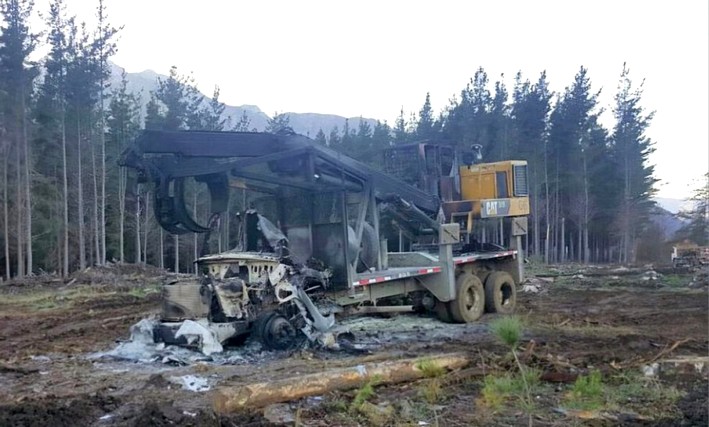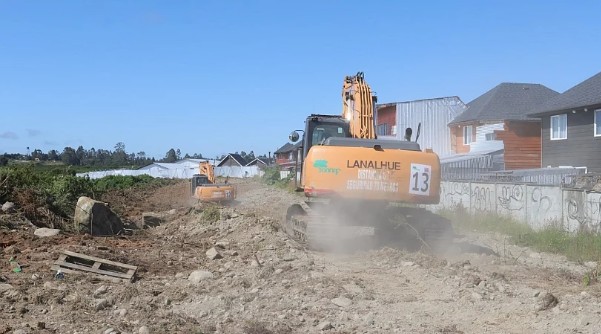Dry Firewood Volume Remains Unchanged Despite High Pollution
Despite initiatives to increase the supply of this biofuel, it has remained largely unchanged, representing 20% of the total traded in Osorno. This is attributed to the lack of enforcement against those selling wet firewood, creating unfair competition.
Among the main criticisms of Osorno’s current Air Pollution Control Plan is the stagnation in dry firewood production, despite it being one of the four pillars to reduce air pollution levels.
Nearly nine years after the implementation of this measure, air quality remains poor, and no decisive actions have been taken to increase the supply of this biofuel, which by 2025 would remain at the current 20%.
Although several initiatives aim to reverse this situation, producers' associations argue that without increased inspections to curb the sale of wet firewood, it will be difficult to boost demand for a high-quality product. This discourages production and limits the growth of available cubic meters in the commune.
SUPPLY AND INITIATIVES
Regarding the outlook and projections for dry firewood in 2025, the Regional Minister of Energy, Liliana Alarcón, explained that there are currently 117,295 certified cubic meters of dry firewood, distributed across over 9,000 households in Osorno, representing 20% of the city’s total biofuel. “We estimate based on the Firewood Quality Seal, our instrument with the Energy Sustainability Agency,” she stated. The figure could rise with 20 new producers joining the seal, but this depends on dry firewood sellers adhering to the initiative.
Currently, 33 merchants in the province hold this quality seal, equivalent to 44% of the regional total of 75. The program is open to new firewood sellers, and the Regional Ministerial Secretariat (CIB), which funded a project in Osorno this year, plans to implement two new initiatives next year targeting medium and large biomass companies, including new energy development lines,” she added.
LACK OF ENFORCEMENT
Meanwhile, Cristina Martínez, president of the Agrebios AG firewood association—which holds the quality seal and has 27 years of experience in dry firewood—stated that last year, members were left with around 80% unsold due to insufficient enforcement against informal trade.
“This year, I had about 1,300 cubic meters stored indoors, and the same happened to most certified firewood sellers. This year, we’ll likely face the same issue. While it’s true that the required amount of dry firewood isn’t available today, no one has taken responsibility, and it’s much easier for merchants to sell wet firewood,” she said.
The leader explained that dry firewood sellers have seen their capital frozen for up to three years due to informal trade, hindering progress in biofuel production.
Although the Ministry of Energy supports drafting a biofuels law, enforcement agencies like Conaf and the Internal Revenue Service (SII) lack capacity. “The biofuels law must wait for regulations and deadlines to take proper effect, but meanwhile, entities like the SII and Conaf could enforce inspections. Yet when they act, they target established sellers because it’s easier—but what about those operating on the streets?” she questioned.
Cristina Martínez also criticized municipalities for neglecting the dry firewood issue or the use of wet firewood, despite the high healthcare costs from respiratory diseases. “Osorno has dry firewood available, but we haven’t grown as desired because sales aren’t normal—we’re left with unsold stock yearly, preventing reinvestment,” she said.
She also questioned the exclusion of firewood from heater replacement programs, favoring pellets or electricity without considering their high costs or consulting citizens. “We work hard to deliver quality, but no one ensures we’ll keep selling. Even state agencies no longer use dry firewood, ignoring that it’s carbon-neutral, local, and job-creating. Outsiders can’t dictate policies without understanding our reality,” she asserted.
REGULATING THE MARKET
Ricardo Becerra, president of Osorno’s Citizen Environmental Network, argued that the city’s pollution control plan failed its key pillar of ensuring sufficient dry firewood. “Having the best heating systems is pointless if people can’t find dry firewood. Next year’s projected 20% volume is too low for the annual demand of over 460,000 cubic meters. Other heating alternatives have been promoted, but firewood remains dominant due to southern Chile’s firewood culture,” he stated.
Becerra added that Osorno remains among Chile’s most polluted cities despite eight years of the plan, urging measures to boost dry firewood production and regulate prices for accessibility. He noted that while drying systems were encouraged, many were abandoned due to high costs.
“When the plan began, specific work was promised with producers using drying plants, but the state broke its promises. One reason for the plan’s failure is insufficient state investment to gradually improve air quality over ten years,” he concluded.
Source: subscription edition ofEl Austral de Osorno

















